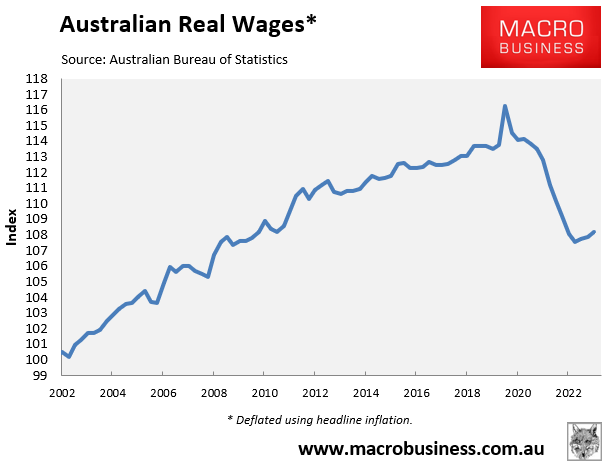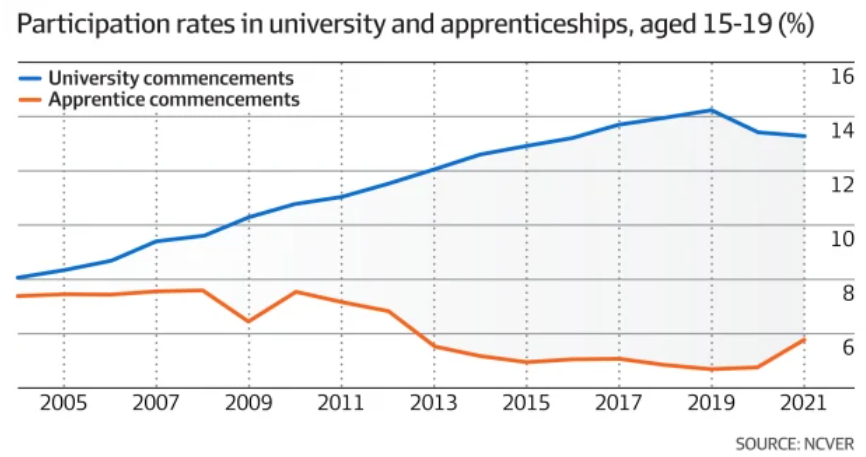The Albanese Government released the Australian Universities Accord Final Report over the weekend, which recommends the following targets for higher education attainment:
- increasing the tertiary education attainment rate from 60% to at least 80% of Australians in our workforce by 2050;
- increasing the proportion of university-educated Australians aged 25 to 34 years from 45% to 55% by 2050, and
- increasing the number of 25- to 34-year-olds with a tertiary-level vocational or technical qualification to 40% by 2050.
The report claims that 6.3 million extra jobs will require a tertiary education by 2050 and that many more students from disadvantaged backgrounds will have to graduate if this target is to be met.
To achieve its 55% university attainment target, the report notes that “the system will need to more than double the number of Commonwealth-supported students in universities from 860,000 currently to 1.8 million by 2050.”

One of Australia’s most perplexing economic paradoxes is that, despite having a growing number of university graduates in the labour market, productivity growth has plummeted and “skills shortages” are endemic.

Real wage growth in Australia has similarly collapsed, while the number of university graduates has ballooned.

Why does the Albanese government want 55% of Australians aged 25–44 to hold a bachelor’s degree or higher?
The majority of jobs in Australia require a university degree, not because of any particular skill demand or requirement but rather as a lazily used “signaling” tactic by employers to filter job candidates.
This “credential inflation” has increased university enrolment without having a discernible positive economic or societal benefit.
The value of a university degree has declined as the number of people pursuing higher education has increased to the point where too many people hold a degree.
The situation as it stands is absurd because entry-level jobs that previously required only a high school diploma are now impossible to fill without a university degree.
Public financing has also been directed away from TAFE and vocational education, which have dropped in popularity. This has resulted in recurring skill shortages in a variety of industries, particularly trades:

To achieve the 55% university attainment target, the federal government will need to dig deeply into cohorts who traditionally do not attend university, such as people who choose apprenticeships over a degree. This will only create greater shortages among the trades.
Unfortunately, Australia’s universities have devolved into revenue-driven parasites, graduating far too many students who would have benefited more from vocational training.
Australia’s focus on higher education must, therefore, shift.
For starters, university admissions standards for both domestic and international students should be significantly tightened. Governments should also divert funding toward VET and TAFE.
Prioritizing universities above vocational or trade schools has never been in Australia’s best interests, either socially or economically.

